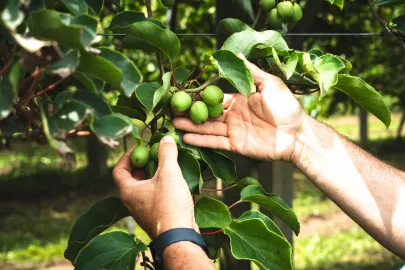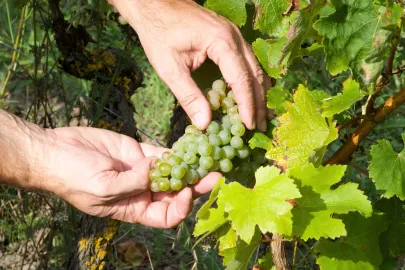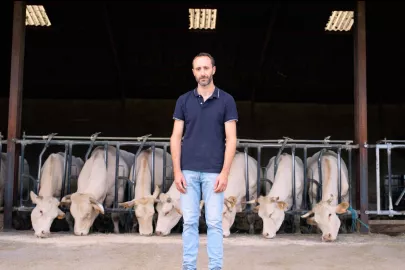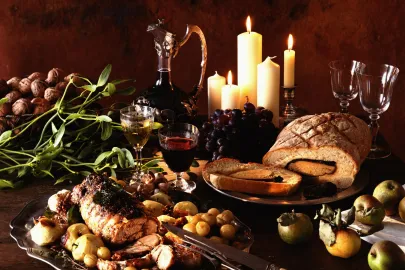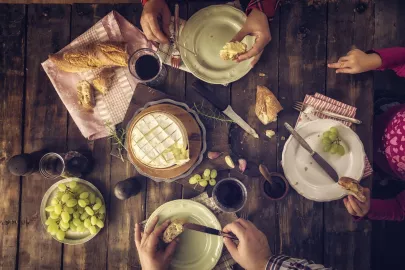A venerable presence on the Jura wine scene, Domaine de la Pinte has an amazing ability to move with the times. It remains undoubtedly one of the most interesting vineyards in the region. And what better way to find out why than by visiting the vineyard?
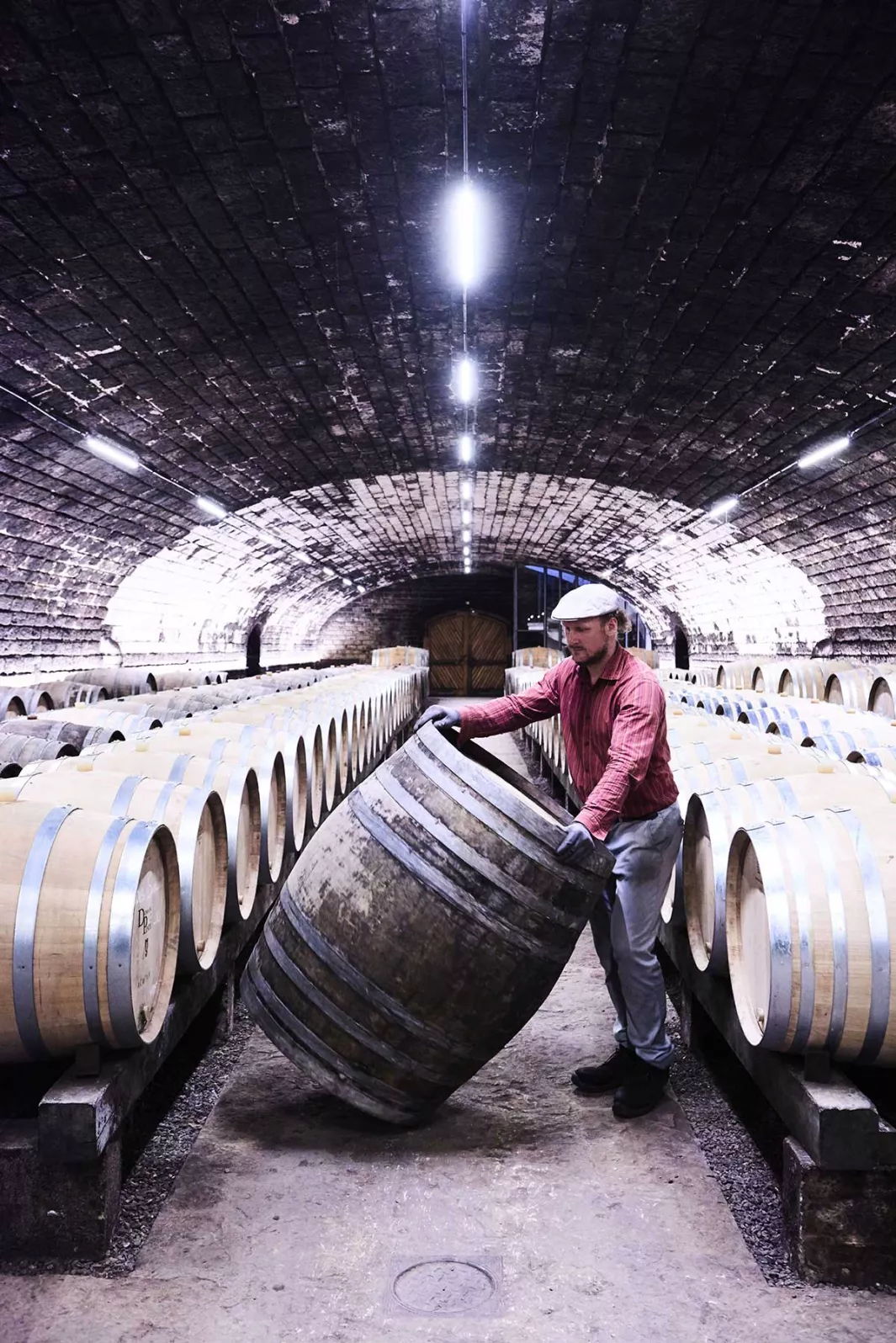
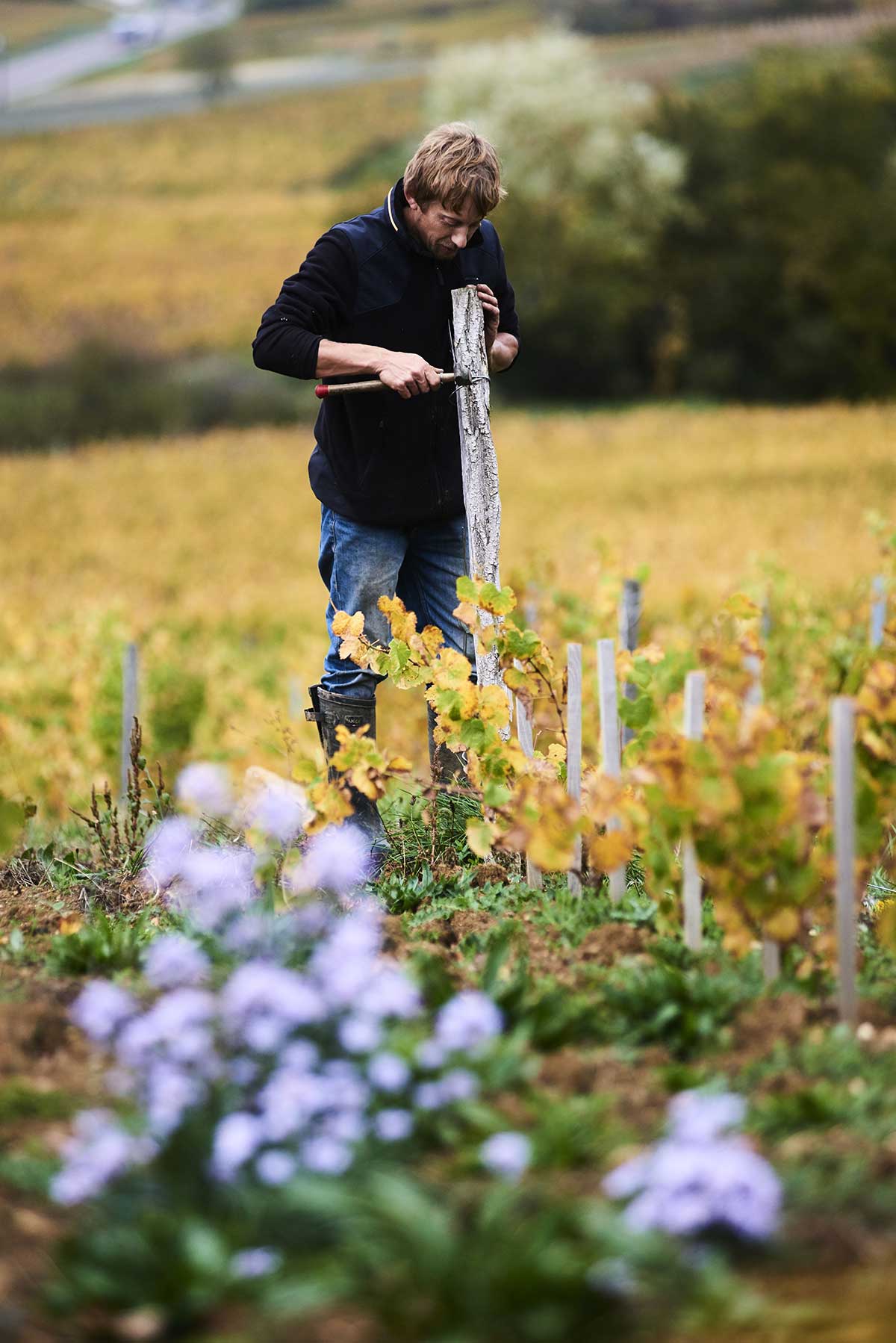
© Louis-Laurent Grandadam
The Jura may have taken a while to catch the public eye, but its estates have long been active in the world of wine. Traveling from Arbois towards Poligny, two large houses appear on the left among the vine-planted slopes.
This is Domaine de la Pinte, one of the region’s longest established estates. Bought in 1953 by Roger Martin, it began producing wine from its grapes in 1959. Still the owners of the estate, his family, who live in Dijon, obviously keep a close eye on the vines and have full confidence in those responsible for its day-to-day operation, such as Emmanuelle Goydadin, cellar master and oenologist, and estate manager François Duboz.
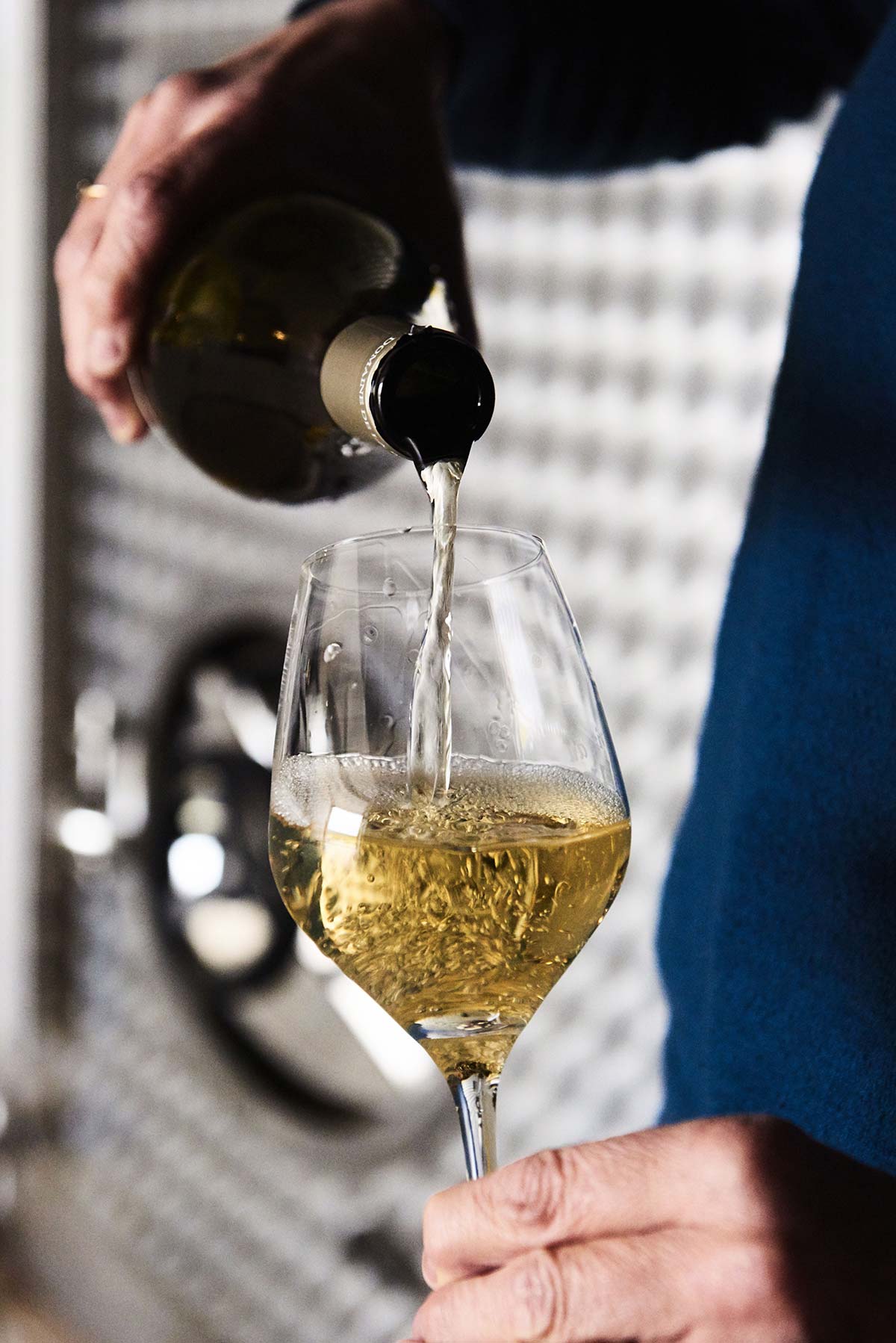
© Louis-Laurent Grandadam
Early organic production
Organic since 1999 and biodynamic since 2009, "La Pinte," which takes its name from the local area, has thirty or so hectares of vines, mostly around the cellar, on highly nuanced terroirs over slightly uneven ground. Some are mostly blue and red marl, while others are cooler, with a mix of marl and limestone. Appointed a year ago, François Duboz continues to apply the vineyard’s high standards, adapting biodynamic practices to local conditions and adjusting to climate change, for example by preventing early budbreak and first-bud exposure to spring frost by changing pruning systems to slightly delay the growth cycle of early varieties.
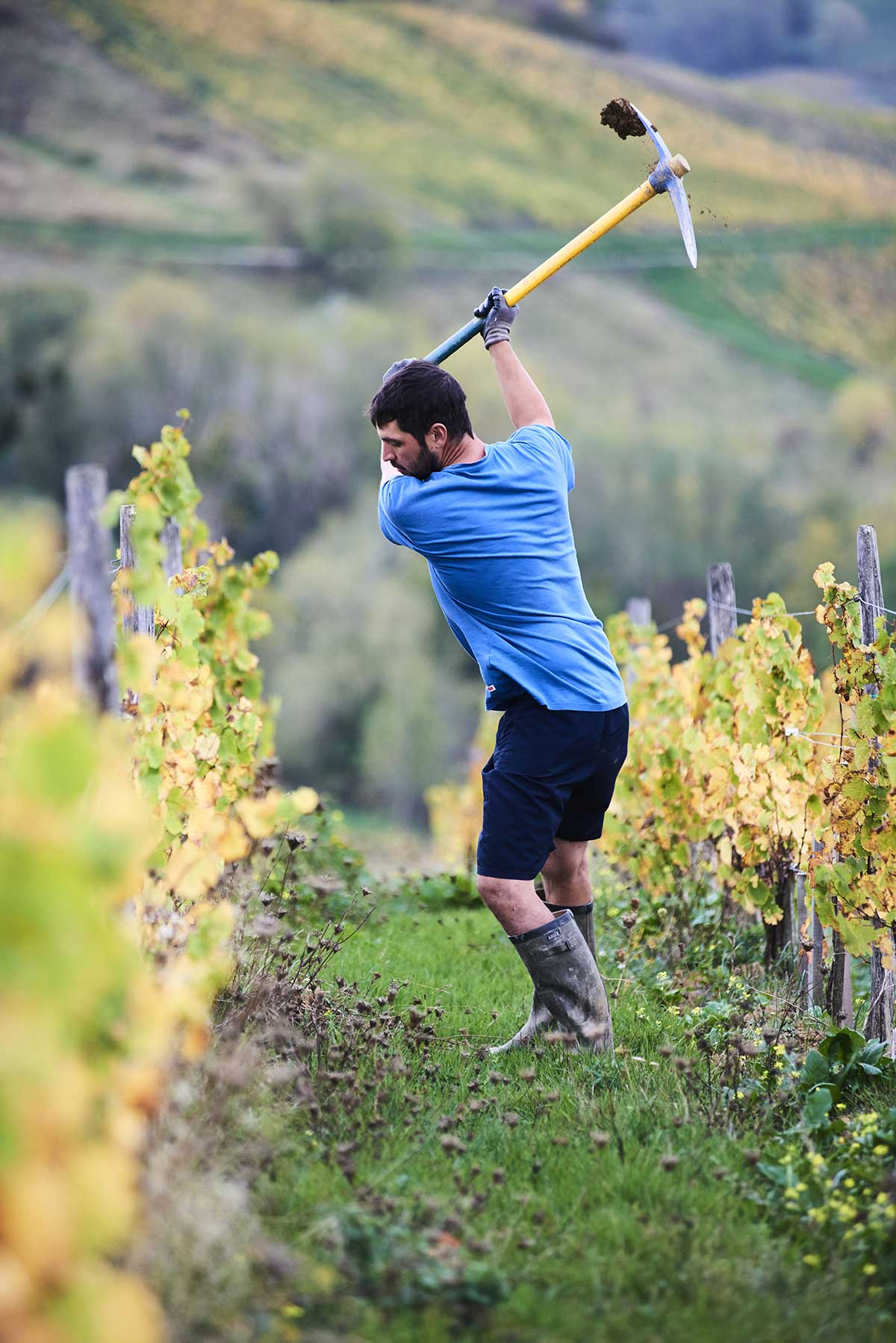
© Louis-Laurent Grandadam
Meticulous cellar work
Originally from Alsace, Emmanuelle Goydadin has seen a dozen or so vintages come and go. What does she look for in a wine? Delicacy, elegance and the expression of the terroir through three single-plot cuvées – the others are from different plots. Spoiling fruit harvested from the vine in the cellar, or worse still disguising it, is out of the question.
To preserve its integrity, the oenologist refuses to interfere with the process in any way – vigorous pumping and additional inputs are banished, with the exception of sparing doses of sulfites – instead giving the wine time to settle and find its balance in peace. This period between the end of the alcoholic fermentation and bottling takes place in barrels or large vats arranged in orderly lines in a remarkable vaulted cellar. A peaceful place, perfect for aging wine – a fact much in evidence when you taste a selection of cuvées in the attractively decorated small cellar: the whites – Savagnin, which covers half the estate, and Chardonnay and Melon-Queue-Rouge for the rest – and the reds – Trousseau, Poulsard, Pinot Noir – enjoy close ties to the terroir and the grape.
And a word to the wise: all the wines are available in the estate’s store at the center of the charming village of Arbois.
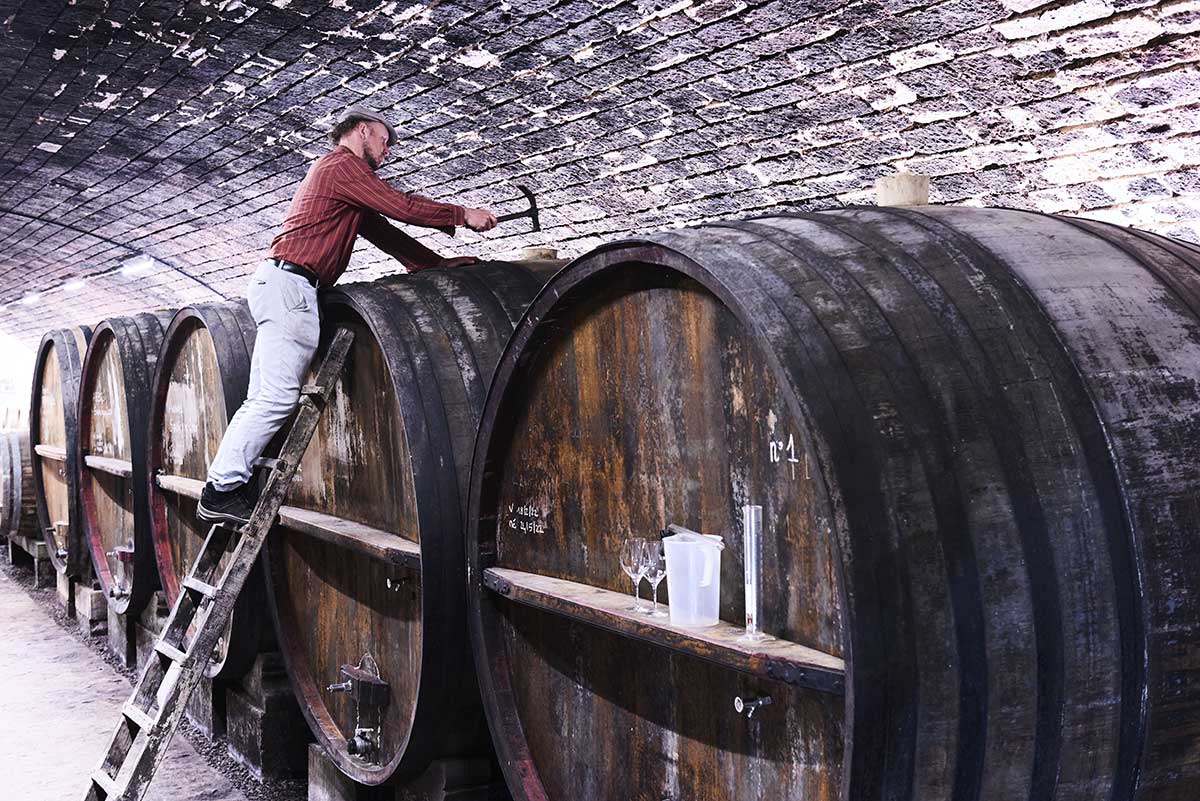
© Louis-Laurent Grandadam
The Taste France Magazine selection
Arbois Pupillin, Melon-Queue-Rouge 2021
An ancient variety of Chardonnay, Melon-Queue-Rouge has a flavorsome intensity without spilling over into exuberance. Wait a few months before uncorking it with cured meats, white meat or even trout; just long enough to mellow without losing its refreshing verve.
Arbois – ‘La Capitaine’ 2019
This red wine composed of 50% Poulsard, 25% Pinot Noir and 25% Trousseau comes through on its promise of sincerity and indulgent flavor. Perfect with red meat, grilled or stewed.
Arbois, Trousseau 2020
Vinified and aged in the simplest possible way, this cuvée only ever sees the inside of the vat, with no wood-aging. Deliberately supple and dynamic, it accomplishes its mission with aplomb. Perfect with appetizers or pork dishes.
Want to discover more of the Jura region? 🗺️
Let yourself be guided through Jura's iconic wines, uncover the secrets of absinthe and discover the delicious local foods waiting for you in the region!
Contributor

Editor



